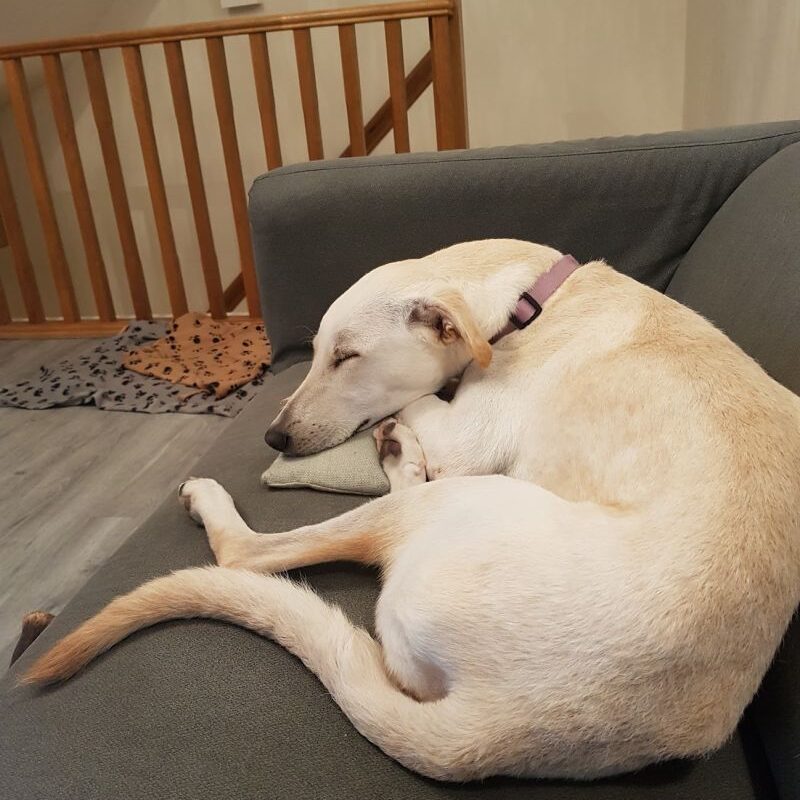Words by Suz Rogers, HBCL Co-Director
This is Marsha, short for Marshmallow. She’s our new rescue dog and about 1 year old. She has been helping me to live and breathe all things ‘behaviour change’.
For example, it is amazing how quickly habits can form in some situations.
On her second day with us, I popped upstairs to literally just get a jumper, and when I returned she had totally destroyed our TV control. The children were not impressed by the control eating or the fact that I ordered the wrong replacement model but we eventually received a new one in the post. This prompted the development of a new protocol for TV use – once you’ve found your channel place the control on the high-up shelf and never, ever, leave it in her reach. This worked for a few days until a lapse caused control number two to be turned into little bits during the time it took to answer the door to a lost postman.
However, two weeks in and now the habit seems to have been fully adopted by all four human members of the family. This is super quick and I wish other habits were so easily adopted by the same family members!
Habits can be so powerful. As cognitive ‘shortcuts’ they are stronger than intentions. The application of the science of habit has huge potential in the animal welfare world as so many elements of looking after animals (pets, farm animals, animals in captivity, and more) are routine. If we can make behaviours automatic, then we do not have to spend so much energy on persuading people to do things, for example. Many life-skill habits are in place by the age of 9, so this also highlights the importance of reaching children and helping to instil behaviours that are kind to people, animals, the environment, and the planet as a whole.
“The application of the science of habit has huge potential in the animal welfare world as so many elements of looking after animals (pets, farm animals, animals in captivity, and more) are routine.”
There are some simple ways to instil habits – one is to link a habit you are trying to develop with a habit you already have. In this example, putting the control away on a high shelf after you have found the programme you wish to watch, is a strong link, or hook, and the control not being destroyed and being able to watch more TV is a strong reinforcer!
Marshmallow is reminding me of other elements of behaviour change, not just habits, but I’ll save them for another blog and opportunity to share another gorgeous photo.
Interested in learning more about habits?
- At HBCL, we are passionate about the science of habit. We sometimes run workshops on this topic, and often provide tips in our talks on how to set up habits you want to adopt, or that you’d like your staff or other people to adopt. Get in touch if you would like to know more.
- Jo, HBCL’s co-Director, has published a paper on this subject. https://lnkd.in/eBafU8ED We are seeking funding to develop this work further and apply it to other species and also wider contexts – developing habits that help the environment, people and the planet too. So watch this space.
Note: I must also point out that we are simultaneously addressing Marsha’s need to chew to address the cause of the unwanted (and potentially dangerous) behaviour, not just the symptoms.

